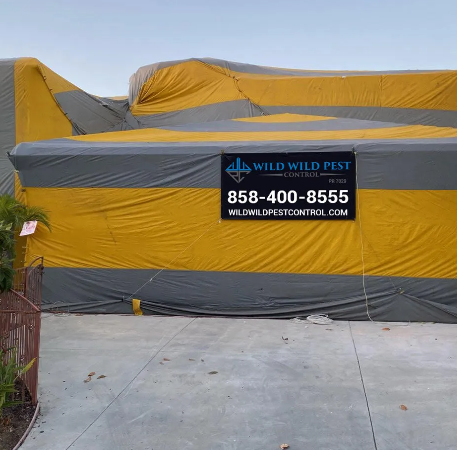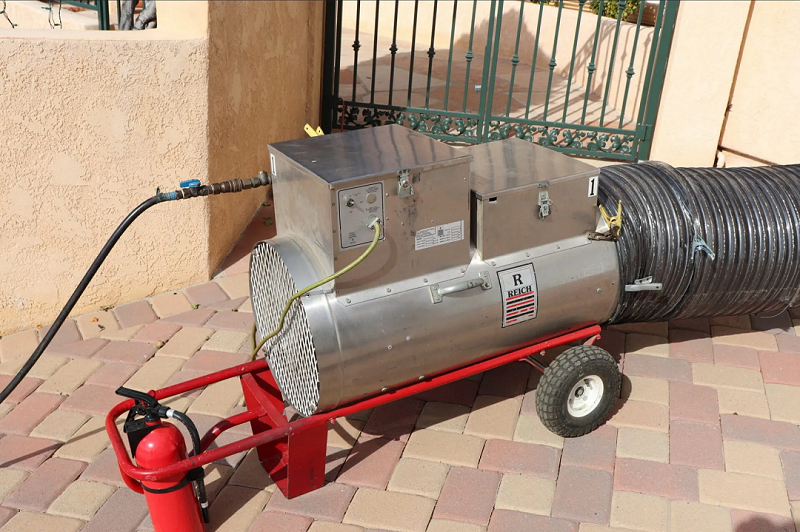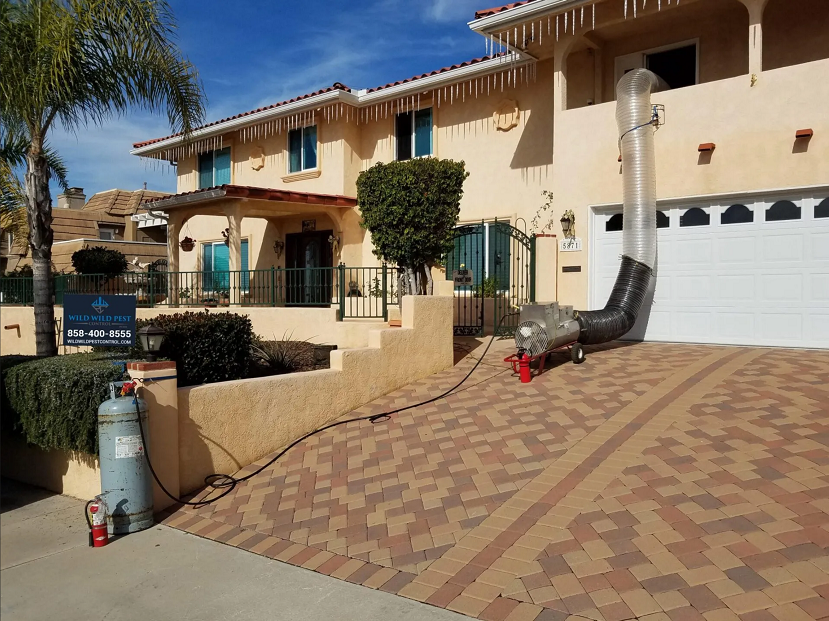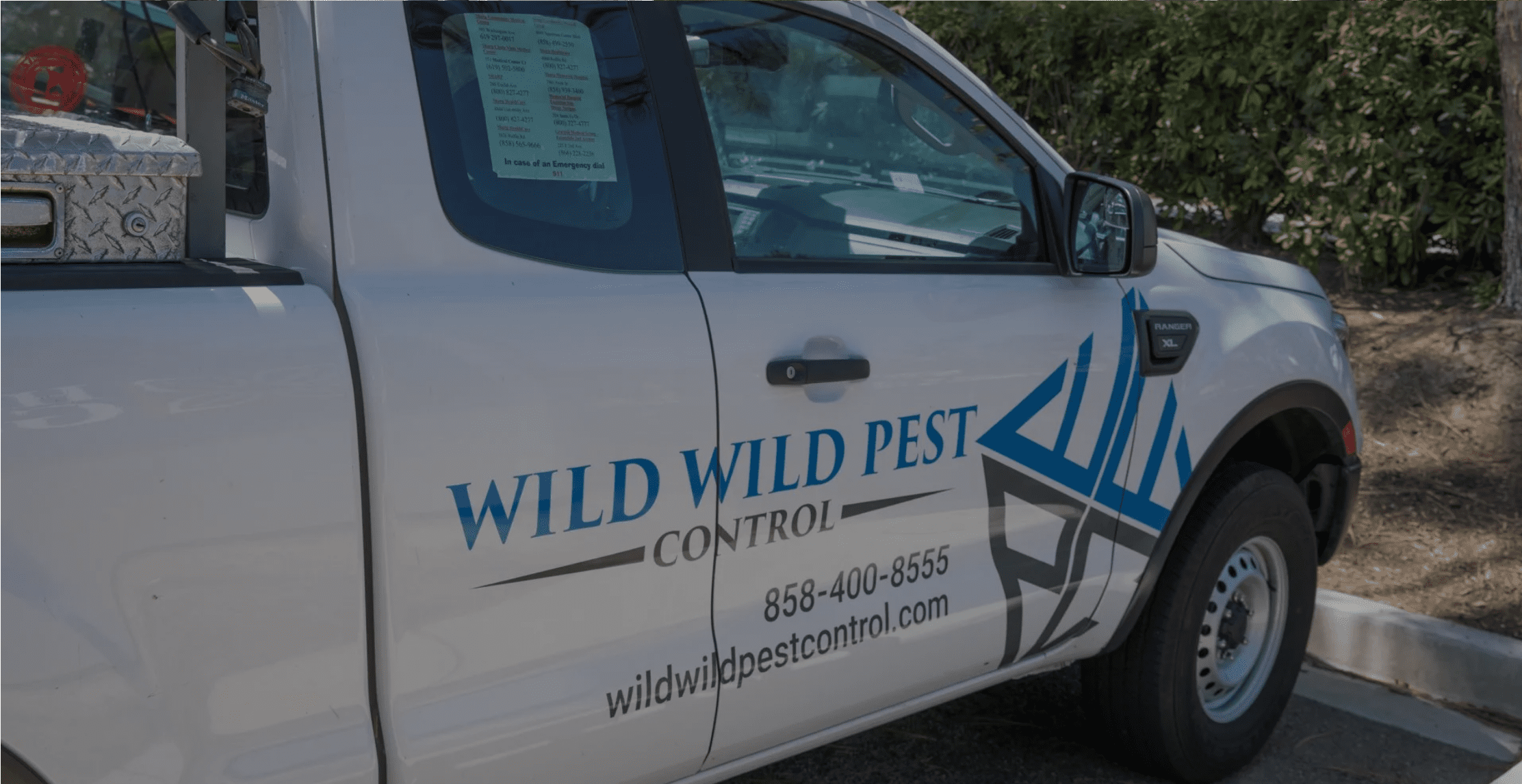San Diego Termite Treatment
SAN DIEGO INSPECTION & FUMIGATION
Termite fumigation is one of the only ways to completely eradicate termites.
THE TERMITE INSPECTION PROCESS
After the San Diego termite inspection is finished, the termite inspector will complete a report with photos documenting findings (which is important for the escrow process and for your records should you ever want to sell your home). The termite inspection photo report will then be emailed to you.
The inspector will note any evidence of a live termite colony and how much damage the colony has created. If possible, the inspector will show you the termite damage if the area is in an accessible space. The termite inspector will also offer a recommended termite treatment and termite control plan.
- The attic
- The garage
- Crawlspaces

FACTS ABOUT FUMIGATING YOUR HOME

TERMITE FUMIGATION PROCESS
Termite tenting is typically a 2-Night, 3-Day process during which you will need to vacate the home. There are some steps needed to be taken prior to the tenting by the homeowner to ensure safety and success of the fumigation. Below is the process day by day.
Fumigation Preparation Appointment: This appointment is to go over everything that needs to be done prior to the fumigation as well as answer any questions you may have. Your inspector will also provide you with a lockbox to store your key in during the tenting process as well as go over all documents to be signed.
If the property is vacant, SDG&E may cap the gas the day before. Saturate the soil around the home for a proper ground seal. Perform a once-over to ensure all prep work has been performed in and around your home.
If the property is vacant, SDG&E may cap the gas the day before. Saturate the soil around the home for a proper ground seal. Perform a once-over to ensure all prep work has been performed in and around your home.
After the gas has fully permeated the wood members for the appropriate time, the aeration process will begin. Vent screens and the C.A.P. tube will be opened for this process, allowing the gas to slowly expel.
The tarp will be removed from the structure and the licensed fumigator, also known as the licensee will periodically check the air quality until it is safe for re-entry. Once the structure is safe for re-entry, the licensee will post a notice on the front door stating that the property has been deemed clear for re-entry. You will need to save this notice to show to the SDG&E service technician to have your gas restored the day after the fumigation process is complete.
It is the homeowner’s responsibility to scheduled SDG&E to come out to the property a turn on the gas. Someone will need to be present for this appointment to allow the SDG&E service technician access to the home to re-light pilots and test and appliances that operate off of gas. Be sure to keep the re-entry notice that was left on the front door by the fumigators. SDG&E will want to see this notice prior to restoring your gas.
BENEFITS OF HEAT TREATMENT
The great advantage to doing heat treatments is this can be done in one day, NO MOVING OUT, NO CHEMICALS, JUST HEAT!. Once the process starts a technician is at your home until the treatment is completed. (Normally an 8-hr. period) An additional advantage is that portions of large structures can be treated separately, which is very useful in apartments and condominiums.

OUR HEAT TREATMENT PROCESS


